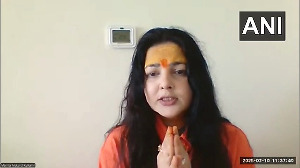 Led by strong growth in service revenue and accelerated data performance, Vodafone India is all set to overtake UK to become the top contributor to the Group's revenues in next few years.
Led by strong growth in service revenue and accelerated data performance, Vodafone India is all set to overtake UK to become the top contributor to the Group's revenues in next few years.
"We are the fastest growing in the Vodafone Group now. we grew 13 per cent (in local currency) this year," Vodafone India Managing Director & CEO Marten Pieters told a group of reporters.
Asked how long it will take to overtake UK, Pieters said it can be done in the next few years.
"We already had overtaken them until they bought Cable and Wireless, which had a considerable revenue in the UK but we are actually very close again. . .we can overtake in the next few years," he added.
India is a key strategic growth market for Vodafone Group and the local unit is third largest contributor to Group service revenues (after UK and Germany) and third largest contributor to Group operating free cash flows (after Germany and SA).
A 100 per cent subsidiary of the Group, Vodafone India is also fifth largest contributor to Group EBITDA (after Germany, Italy, SA and UK).
The company had reported a first time net profit in India since its entry in 2007
Vodafone India had a 125 per cent year-on-year increase in data traffic. Vodafone had 52 million data customers in India, with 7 million of them 3G data customers.
The country's second-largest operator has reported a 25.9 per cent jump in EBITDA (earnings before interest, taxes, depreciation and amortisation) to Rs 13,398.6 crore (Rs 133.98 billion) for FY'14, compared with Rs 10,640.6 crore (Rs 106.4 billion) in FY'13.
The company's service revenue rose 13 per cent to Rs 37,606 crore (Rs 376.06 billion) for the financial year from Rs 33,281.8 crore (Rs 332.81 billion) previously.
As part of the Project Spring, Vodafone will make organic investments of about GBP 19 billion across geographies over the next two years.
The main elements of the Project Spring investment programme include 4G in Europe, where it aims to reach 91 per cent population coverage by 2016, and 3G in emerging markets, especially India, where it plans to cover 95 per cent of the population by 2016.











 © 2025
© 2025